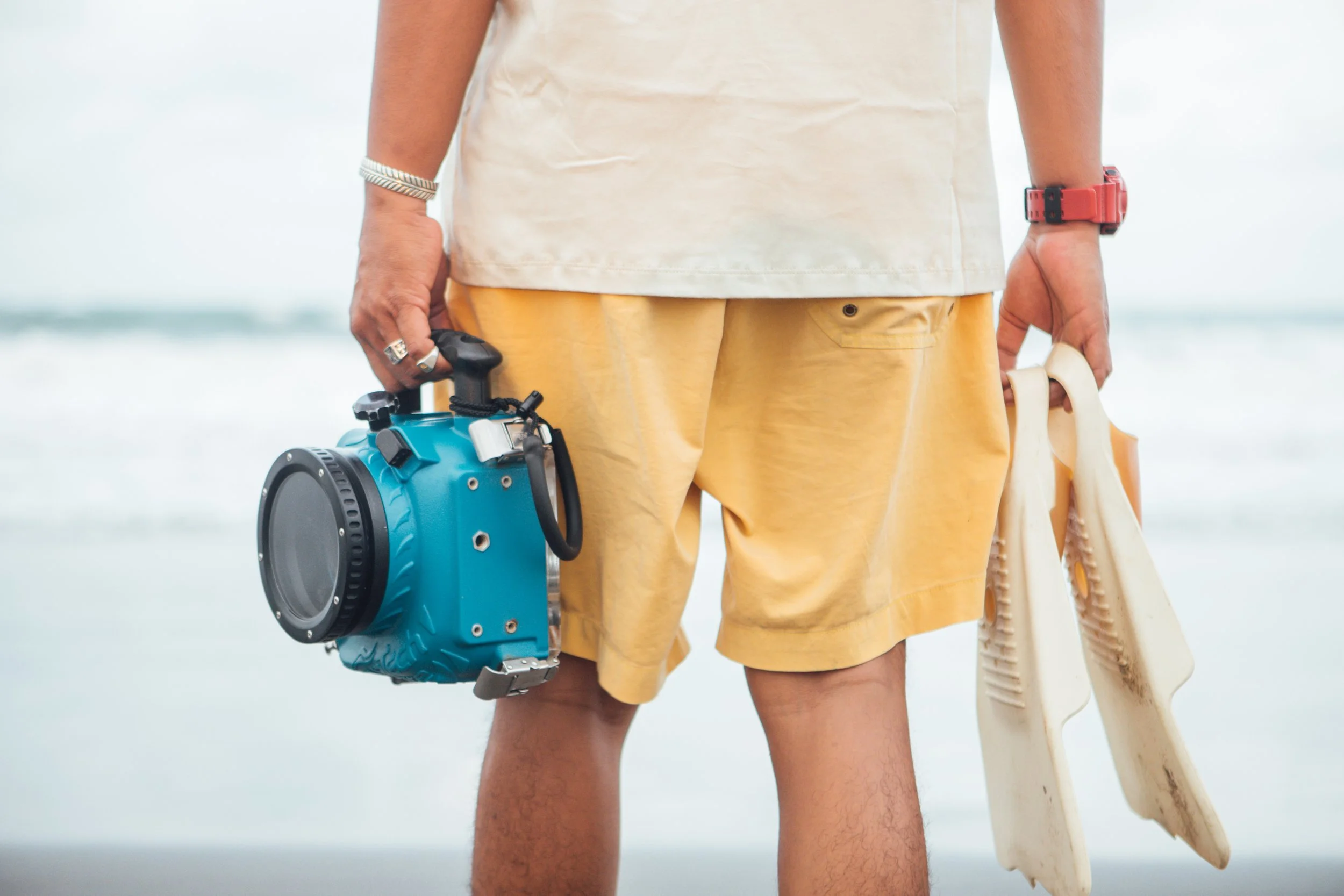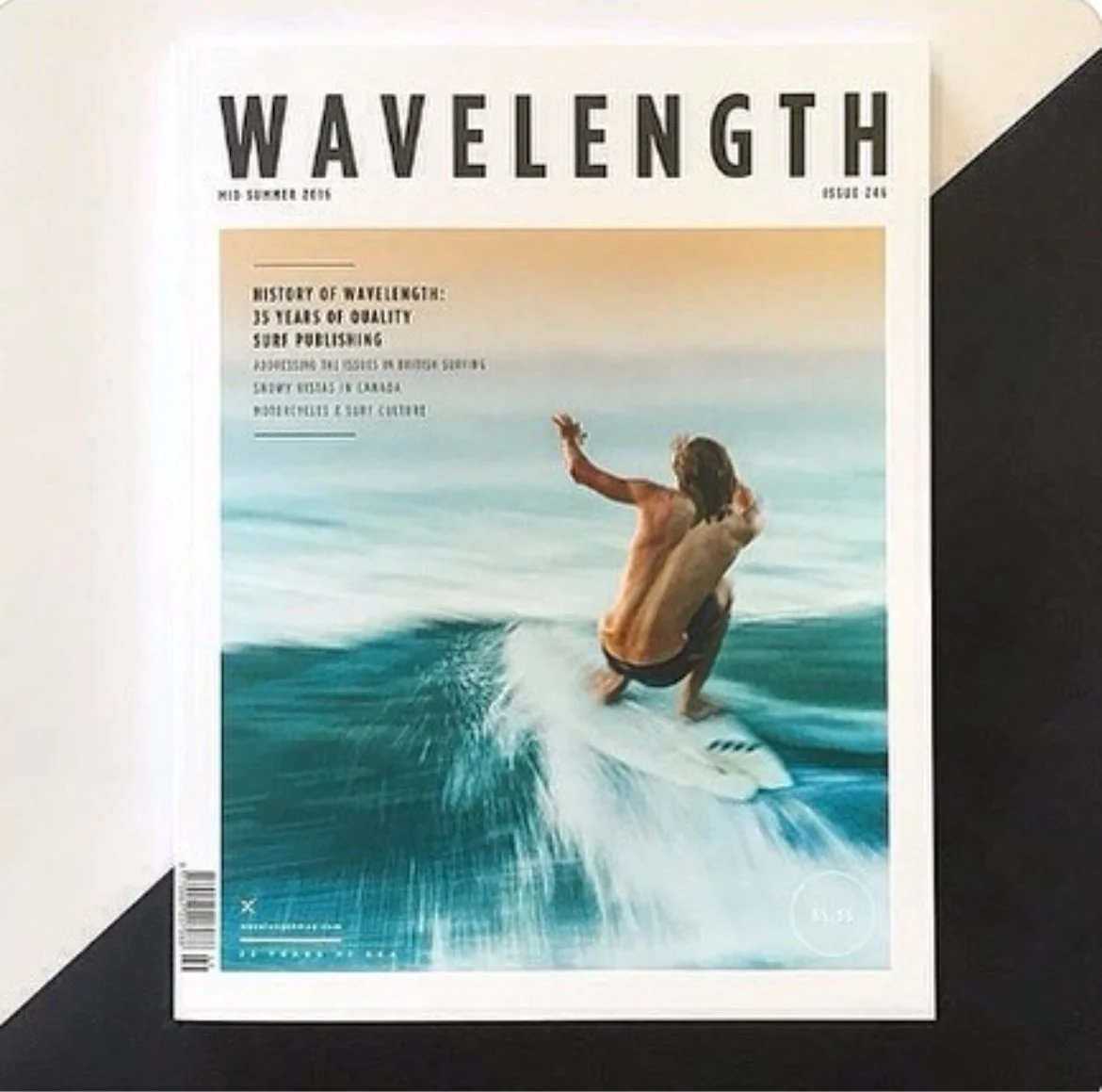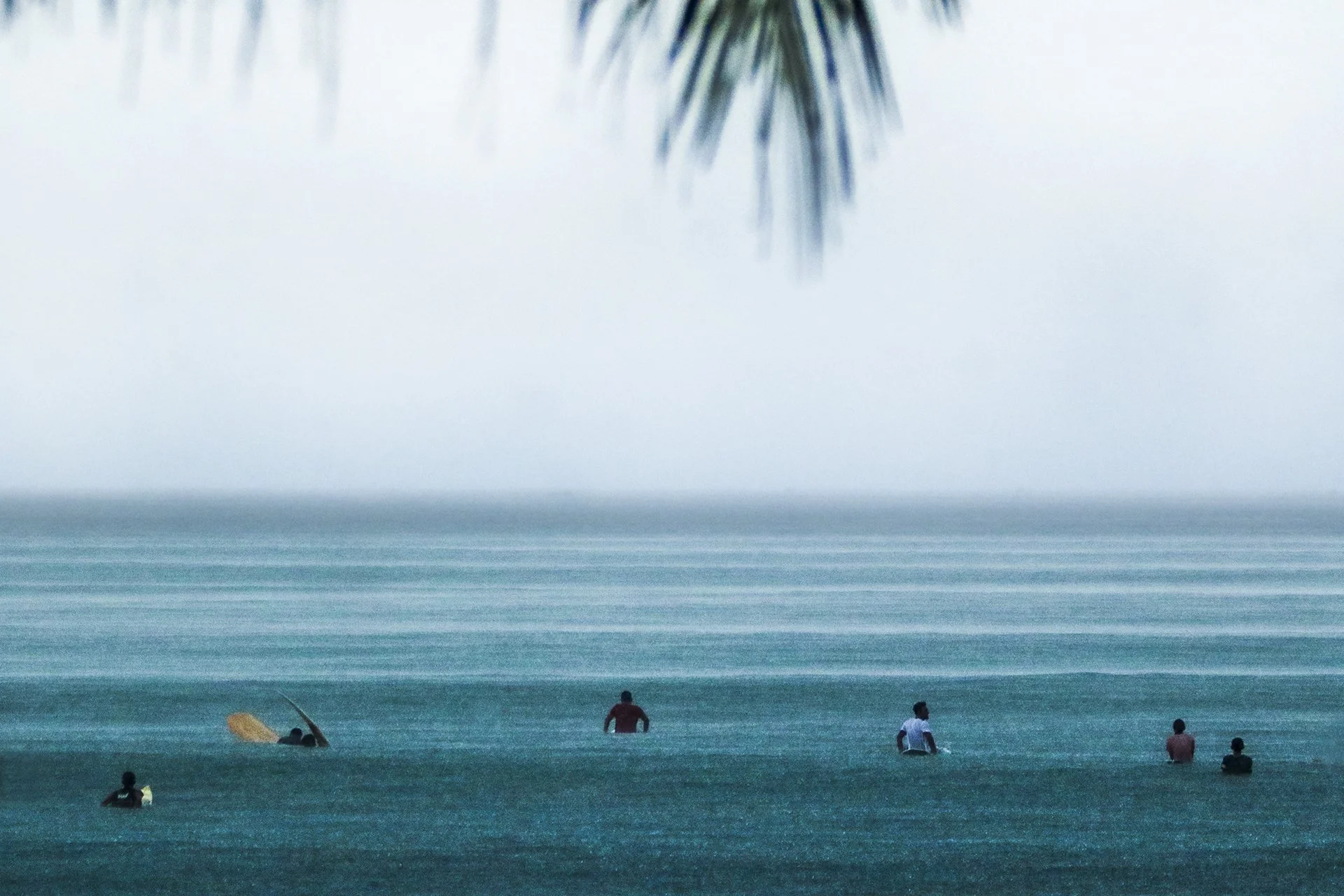Behind the Lens: Giang's Journey and Tips for Capturing the Perfect Wave
“I try to get the surfers’ feelings into my soul... I feel I’m a surfer when photographing.”
There's a special connection between a surf photographer and the ocean. It's more than just snapping pictures; it's about understanding the waves, anticipating the moment, and seeing the beauty in every detail. For us at Tiny Wave Surf Club, this connection is best embodied by Giang Alam Wardani, the visionary who has helped shape our brand's visual story from the very beginning. He even suggested we start an Instagram account to reach a broader following. His captivating surf photography has graced the pages of leading publications like Foam Symmetry, Surfers Journal, Wavelength, and Japan's Blue magazine, and he even landed his first cover on Pacific Longboarder.
We recently sat down with Giang to learn about his unique journey and the wisdom he's gained capturing the ocean's magic.
Giang's path into surf photography wasn't planned. He was a school teacher, but as he explains, "it’s not what I wanted to do; it’s what my parents wanted for me." His true interests were "being outdoors... surfing, motorbikes, and making music." When he decided to stop teaching after seven years, he felt "confused about what I should do." Yet, he always believed he could find his calling in Batukaras, even if it wasn't teaching.
The spark ignited when he borrowed an old camera from his good friend, Husni Ridwan. "That was my first time” picking up the camera, Giang recalls. He only knew how to press the button and perhaps adjust the ISO if it was too dark. He admits he felt "a little bit confused because no one here [in the village] was really into photography, so I was doing it by myself.”
The real turning point came with a photo Giang took of Husni—a shot of Husni cross-stepping, shot through trees, taken from the hill overlooking the main point in Batu Karas. Husni posted it on Instagram, and it caught the eye of renowned professional surf photographer Dustin Humphrey. Dustin asked who took the picture, and when he found out it was Giang, he told Husni to encourage Giang to keep learning, keep doing photography as he had a talent for it. Giang remembers this as a huge boost of confidence, giving him "a lot of spirit."
Giang's core motivation for photography is clear: "I really love to live at the beach." He sees his photography as a way to "get by and be able to live at the beach. That's my motivation.”
When planning a shoot, Giang's first thought is always "what the client needs." He considers the message they want to send and plans his angles accordingly. Location and time of day are important for Giang, as the light varies- the sunrise light in Batukaras has a "collaboration of yellow and green, also red," while sunset is more about "blue and red." His aim is to get it right in the camera first: "70% must be good in-camera, then 30% for finishing on the computer or laptop," where he mainly adds saturation and contrast.
One of Giang's toughest challenges, especially early on, was deciding "When the good waves roll in, should I grab my board or should I stay with the camera?" His friend Husni offered some honest advice: "You have to commit. If you want to be a surfer, just go out. If you want to be a photographer, stand here behind your lens." Giang chose photography because he felt there was no limit to what he could achieve with his age. He strives to "get the surfers' feelings into my soul," explaining, "I feel I'm a surfer when photographing."
He finds inspiration not only in other photographers like Woody Gooch but also in the distinct styles of surfers such as Alex Knost or Craig Anderson, aiming to capture that same flair in his own work. His dream project is to photograph Alex Knost and he also loves collaborating with brands and other talented photographers, seeing it as a valuable opportunity to learn and grow.
For surf photographers starting out, Giang offers key pieces of advice:
Develop Your Own Style: "You must develop your own character. I think that's the most important thing."
Be Professional: "Do the job, not just for the money you'll earn. Do it because it's your art, it's a part of yourself. You must give it the same effort."
Enjoy the Process: Ultimately, "you do it because you enjoy doing it.”
Embrace Simplicity: "You don't need to show all the elements. Just a taste, sometimes of the big picture, like the whitewash from the wave, a detail of the board. It's simple, but it carries a bigger meaning."
Act Quickly: He emphasizes acting quickly: "If you see something that looks good, capture it straight away. Don't wait any longer." He warns, "You lose your moment, you lose the shot.”
Adapt to Conditions: He doesn't let light conditions dictate his work too much, having learned speed blur techniques so he can shoot all day even when there’s limited light. He doesn't complain about nature; instead, he adapts.
It's Not About the Gear: For those with basic cameras, Giang offers a powerful reminder: "It's not about the gun. It's about the man behind the gun."
Learn and Practice: He learned techniques like speed blur from Anthony Dodds and then practicing to perfect the technique, even learning to use his body as a tripod when needed.
Stay Humble and Open to Learning: A common mistake he observes from beginner photographers is “the lack of humility, perhaps not wanting to learn more.”
Giang's preference for surfing "tiny waves" reflects a profound philosophy: "we must respect the small things before we get to the big things." As he explains, "If you learn to find joy in the small, you'll be well-prepared and content when the big opportunities arrive. But if you begin with the big and then encounter something minor, you're likely to complain. Therefore, it's always better to start with the small."
Giang’s journey, his humble dedication, and his deep connection to the ocean are truly inspiring. His vision not only shaped Tiny Wave Surf Club's imagery but continues to encourage us all to look closer, appreciate every moment, and capture the beauty in every wave, big or small.
Beyond photography, Giang is also a talented musician. His hit song "Batukaras," originally released 15 years ago in 2010, is currently being remixed and is expected to be released in about two weeks. He hopes this new version will introduce the song to a younger generation in Batukaras. You can follow Giang’s creative work through his Instagram - https://www.instagram.com/gianggaw
















